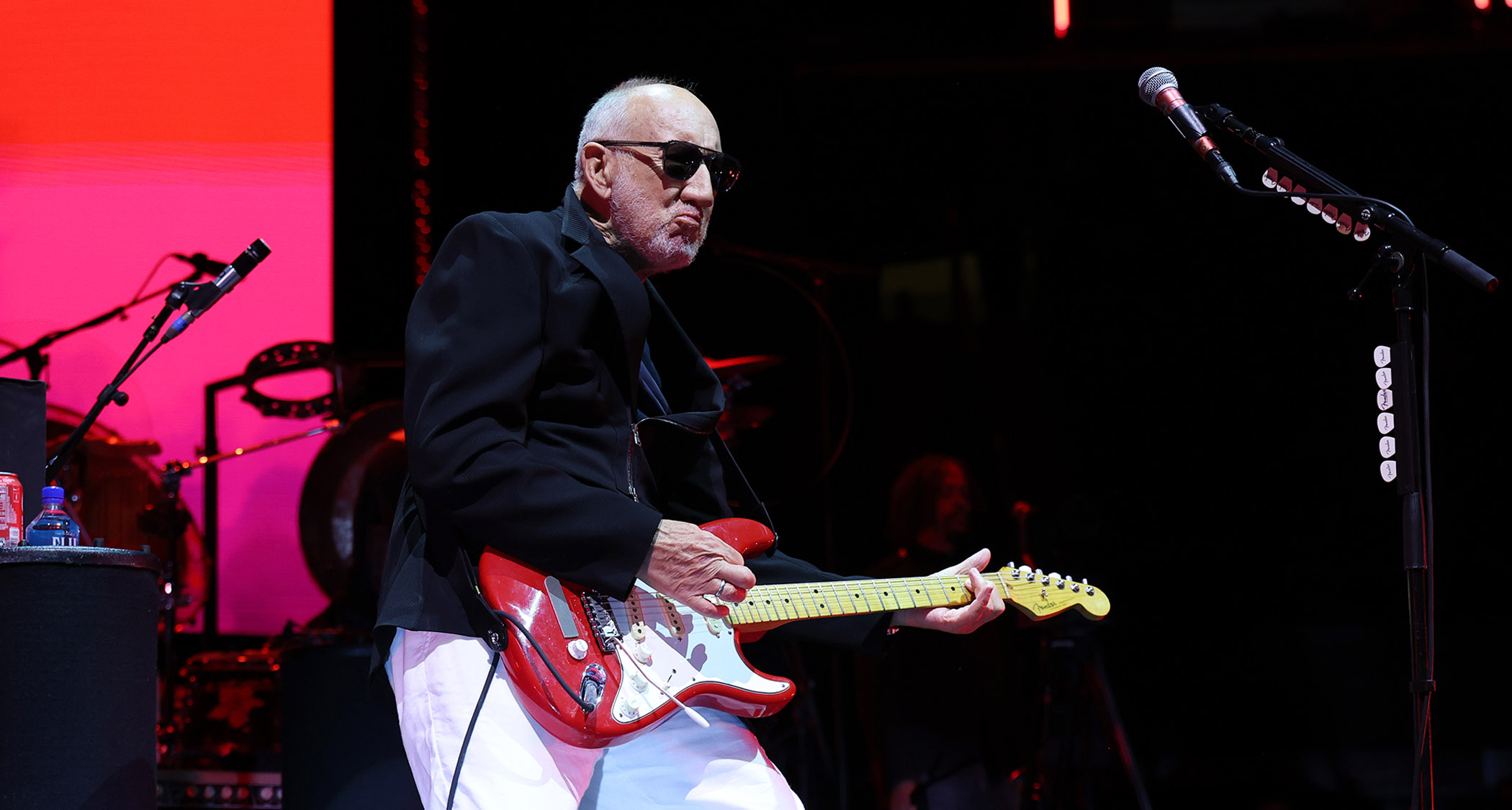The rise, fall and rediscovery of the Fender Jaguar
From clean-cut surf to punk, the Jag is an offset with a lot of history. Guitar historian Martin Kelly unpacks its story

”I’ve been into Fenders since I can remember,” says Martin Kelly, co-author of Fender: The Golden Age 1946-1970 (Cassell Illustrated). “I only got a real job because I wanted to play more guitars!” he jokes, with just a hint of irony.
While shooting for success in the late 80s and early 90s with cult indie band East Village, Martin decided to start up the Heavenly Recordings label with co-founder Jeff Barrett and has been working in the music industry ever since.
An avid researcher, his passion for collecting Fender instruments began as a teenager in the early 80s, when offsets could be regularly snapped up for a fraction of their current price.
“Fender offsets were always my thing,” continues Martin. “There was a shop in Leytonstone called Holiday Music and it was like a Mecca for me and my brother [Paul Kelly, also co-author of Fender: The Golden Age 1946-1970].
Jags and Jazzmasters sit naturally on your lap, but when you play them stood up with a strap, the bridge becomes much more centralised
Martin Kelly
“They used to import guitars from America by the container-load and I remember seeing well over a dozen custom colour Jags in there. They were priced between £160 and £250, and £250 would get you a Shoreline Gold Jaguar in absolutely pristine condition.”
At the time of writing, there are two 1964 Shoreline Gold Jaguars for sale on Reverb’s website: one priced at just under £12,000 and the other at just over £14,000. It’s safe to say, therefore, that the asking price of vintage Fender Jaguars has changed dramatically over the years.
Nevertheless, these figures represent a fraction of the cost of an equivalent year/finish Stratocaster or Telecaster. But this was not always the case.
All the latest guitar news, interviews, lessons, reviews, deals and more, direct to your inbox!
When it was released in 1962, the Jaguar topped Fender’s solidbody price list at $379.50, while the Stratocaster (released in 1954) and Telecaster (originally released as the Broadcaster in 1950) sat much further down at $259.50 and $209.50 respectively. The $349.50 Jazzmaster (released in 1958) compared much more closely, however, both in terms of price and features.
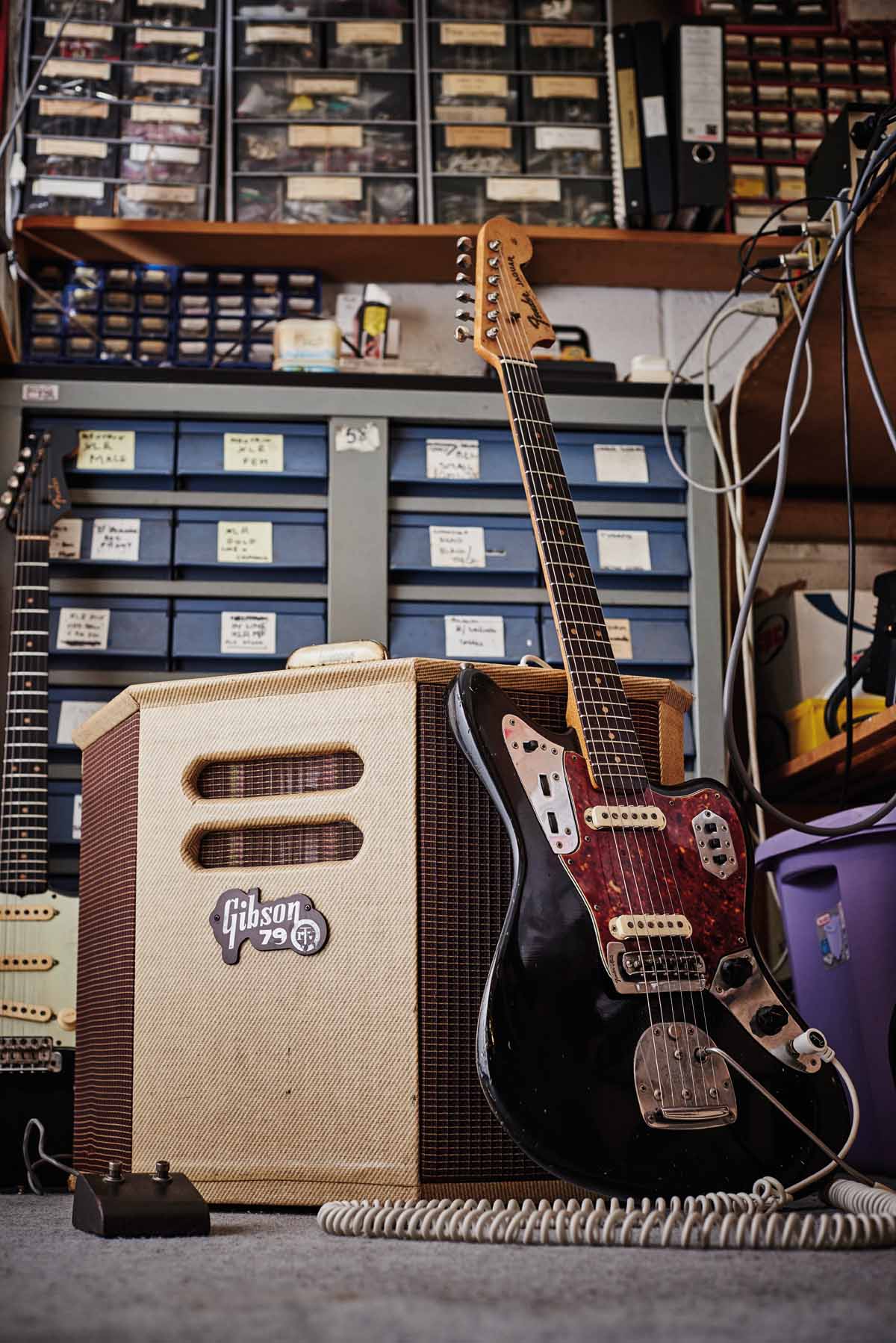
“The Jazzmaster introduced a more flared out headstock shape,” says Martin. “I don’t buy into the idea that it somehow prevents the neck from warping, as is sometimes believed. I just think Leo [Fender] was going for a different design. He would always try and incorporate something new.
“Then the Bass VI came out [in 1961] and the Jaguar also borrowed its headstock shape from that. The Jaguar borrowed from the design of the Bass VI, and vice versa. Early Bass VI models had a regular chrome pickup surround, but that changed to a Jaguar-like pickup cradle design with notched metal sides [in 1963] after the Jaguar came out. At the same time, they also added a Jag-style mute and ‘strangle’ switch to the Bass VI.
“With all those chrome parts, Jaguars probably looked really flashy in the early 60s. It certainly went down well on the Bass VI and the Jazz Bass [released in 1960]. The Bass VI is where Fender introduced the chrome switch panel seen on Jaguars [located on the upper treble bout].
“That made for easier servicing – which was very much Fender’s ethos – because you could just unscrew it like a Tele control panel. With Strats and Jazzmasters, you have to take the strings and the scratchplate off to examine any part of the electronics.”
As per its flared headstock profile, the Jaguar’s offset body was also derived from the original Jazzmaster design.
“The offset body design was developed for jazz players and designed to be played in a seated position,” points out Martin. “The Jazzmaster patent drawing is interesting, because it illustrates a person playing sat down.
Jazzmaster pickups can be quite mellow, which suits certain types of music, but it’s easy to imagine that people requested something with more bite
Martin Kelly
“Jags and Jazzmasters sit naturally on your lap, but when you play them stood up with a strap, the bridge becomes much more centralised. When you’re standing up, it doesn’t feel compact like a Strat or Tele. The ergonomics are different.
“Even though the Jazzmaster has the same [25.5-inch] scale length as a Strat or Tele, the neck feels like it’s an inch or two further away, because the bridge is quite far into the middle of the body. My theory is the Jaguar was designed with a shorter [24-inch] scale to combat that. I’m convinced that’s why they decided to do a shorter-scale model.”
Perhaps the most significant difference between a Jaguar and a Jazzmaster, aside from scale length, is its pickups. “Jazzmaster pickups can be quite mellow, which suits certain types of music,” reasons Martin, “but it’s easy to imagine that people requested something with more bite.
“I think Leo wanted to give each guitar its own identity, and although the Jaguar is probably the first one to borrow heavily from another instrument, in his mind that meant having a new pickup.
“The Jaguar pickup’s chrome cradle was designed to reduce hum and achieve a more focused sound. It sounds brighter and thinner than a Strat, and they’ve got a good bite when you drive them. They’re maybe not as versatile as other Fender pickups, but they really do their own unique thing well.
“The controls are pretty similar to a Jazzmaster. Aside from being able to switch the pickups on and off [individually], you also have a ‘strangle’ switch, which gives the tone a sort of muted quality.”
Also borrowed from the Jazzmaster, the Jaguar’s ‘floating tremolo’ system was highlighted in company literature as one of the guitar’s key selling points. “I absolutely love the Jaguar and Jazzmaster tremolo,” says Martin. “They’re so underrated. I think they’re much better than a Strat tremolo, and I prefer them to a Bigsby. It’s the bridge that Jaguars often get a kicking for.
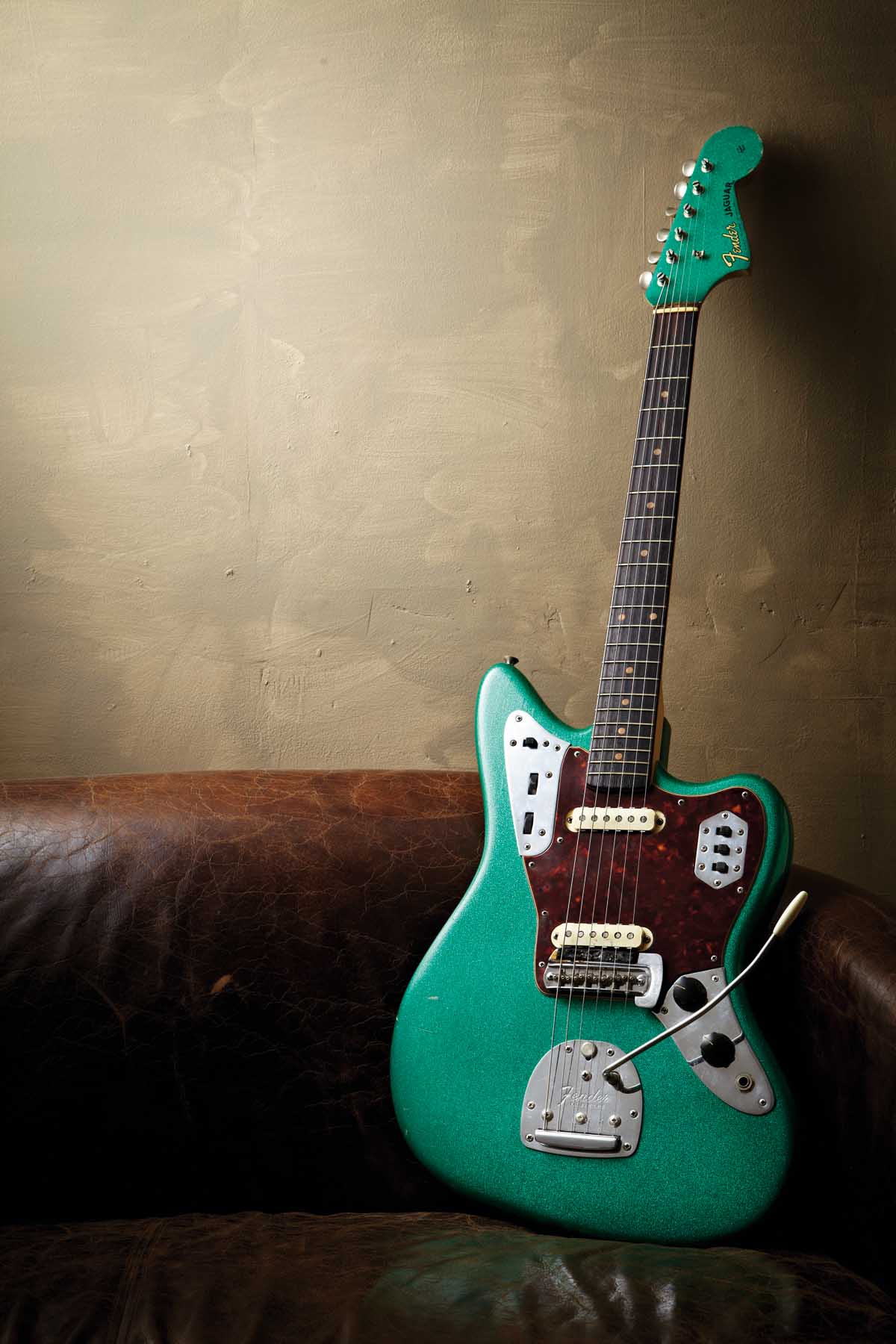
“But you’ve got to remember the gauges of string that were fitted back then tended to be much heavier. If you put a set of 12s on a Jag it really comes to life and the bridge works fine. I certainly wouldn’t recommend going below 0.011[-gauge]. I don’t think the design was wrong, I just think Fender couldn’t have anticipated that string gauges were going to keep dropping.
“I’ve never quite got on with the mute, however, although you can get some interesting sounds from it. On some early 60s records you can hear that muted dead-string sound. It turned out to be a bit of a novel gimmick, but I think it was Leo reaching to do something he hadn’t done on a guitar before.
“In the early 60s, there were a number of instrumental groups like The Ventures, and I wouldn’t be surprised if Fender had that type of sound and that type of playing in mind with the Jaguar. It certainly became the surf guitar – it was the staple instrument. Surf bands might have a Strat and they might have a Jazzmaster, but they nearly always have a Jag.”
Perhaps the most well-known Jaguar player in the early days was Carl Wilson of The Beach Boys fame. “He was pretty inseparable from his,” recalls Martin. “He had a white one with a matching headstock and a tortoiseshell pickguard, which was beautiful.
The Jaguar was so tied in to early 60s culture that it looked very unfashionable by the late 60s/early 70s. The offsets were dying a death
Martin Kelly
”I think he did a lot to promote the Jaguar to other surf groups. It was definitely a guitar you would see in bands with colour-matched sets of Fenders. It goes hand in hand with that [early-60s] era – bands like The Ventures and The Shadows who had matching outfits and gear. It was a strong image.
”But by the late 60s that was an unthinkable image for a lot of bands – it’s hard to imagine a late-60s band with long hair and matching guitars! By that time, the Les Paul was becoming popular, Jimi Hendrix was playing a Strat, and the Tele was finding its followers.
”These models were holding their own, but the offsets were dying a death. The Jaguar was so tied in to early 60s culture that it looked very unfashionable by the late 60s/early 70s.”
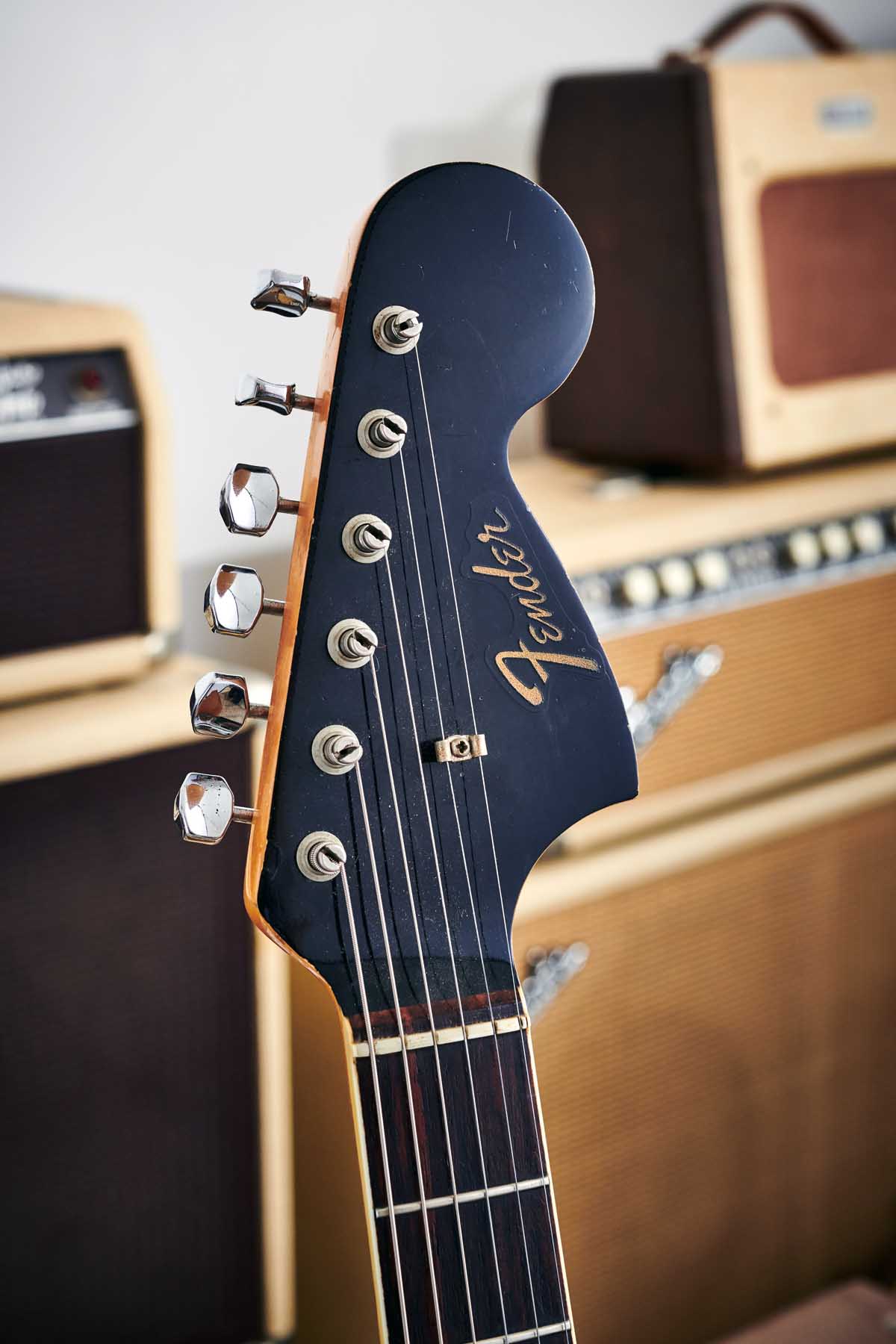
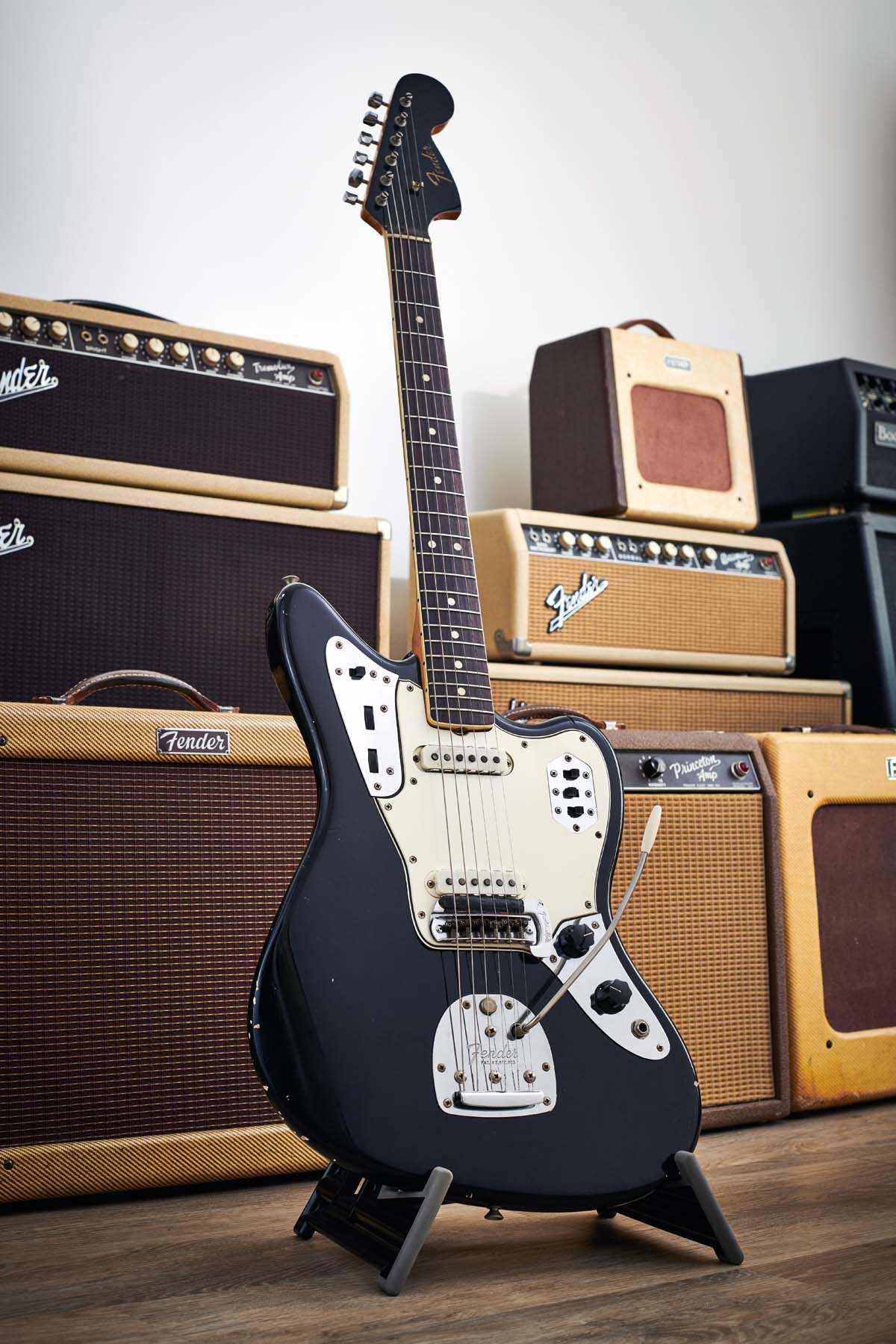

Throughout the late 60s and early 70s, the Jaguar continued to be offered in custom colours and with the option of a maple fingerboard – each for an additional five per cent cost. Left-handed models were an extra 10 per cent.
In the January 1973 price list, the choice of custom colours included Blond, Lake Placid Blue, Olympic White, Black, Candy Apple Red, Natural and Walnut.
At this point, the Jaguar was still the most expensive of Fender’s solid-bodied guitars, with an impressive array of options to boot. In June that year, however, the price list presented a very different picture as the word ‘discontinued’ repeatedly replaced all options bar the left- and right-handed versions of standard rosewood-’board/Sunburst-finish instruments.
By 1974, only the latter remained – and come the following year, the Jaguar had disappeared from the price list entirely.
If I play on other people’s records in sessions and they want me to sound like me, I don’t need to bring any of those old Smiths guitars – I just plug in a Jag and it sounds like me
Johnny Marr
“Jaguar sales had plummeted by the late 60s, and you really don’t see many 70s ones around,” says Martin. “They discontinued it before they discontinued the Jazzmaster – the Jazzmaster outlives it [Jazzmasters stayed in production for around another five years and were dropped from the price list in 1980].
“By the late 70s, the Jag had become a cheap pawn-shop guitar, and that’s when you get punk and new wave bands playing them. In later years, offsets have found their following in a more alternative rock scene. Johnny Marr has probably become the most famous exponent – possibly of all time. He made it his own. I’m sure kids today, when they think of a Jag, think of Johnny Marr straight away.”
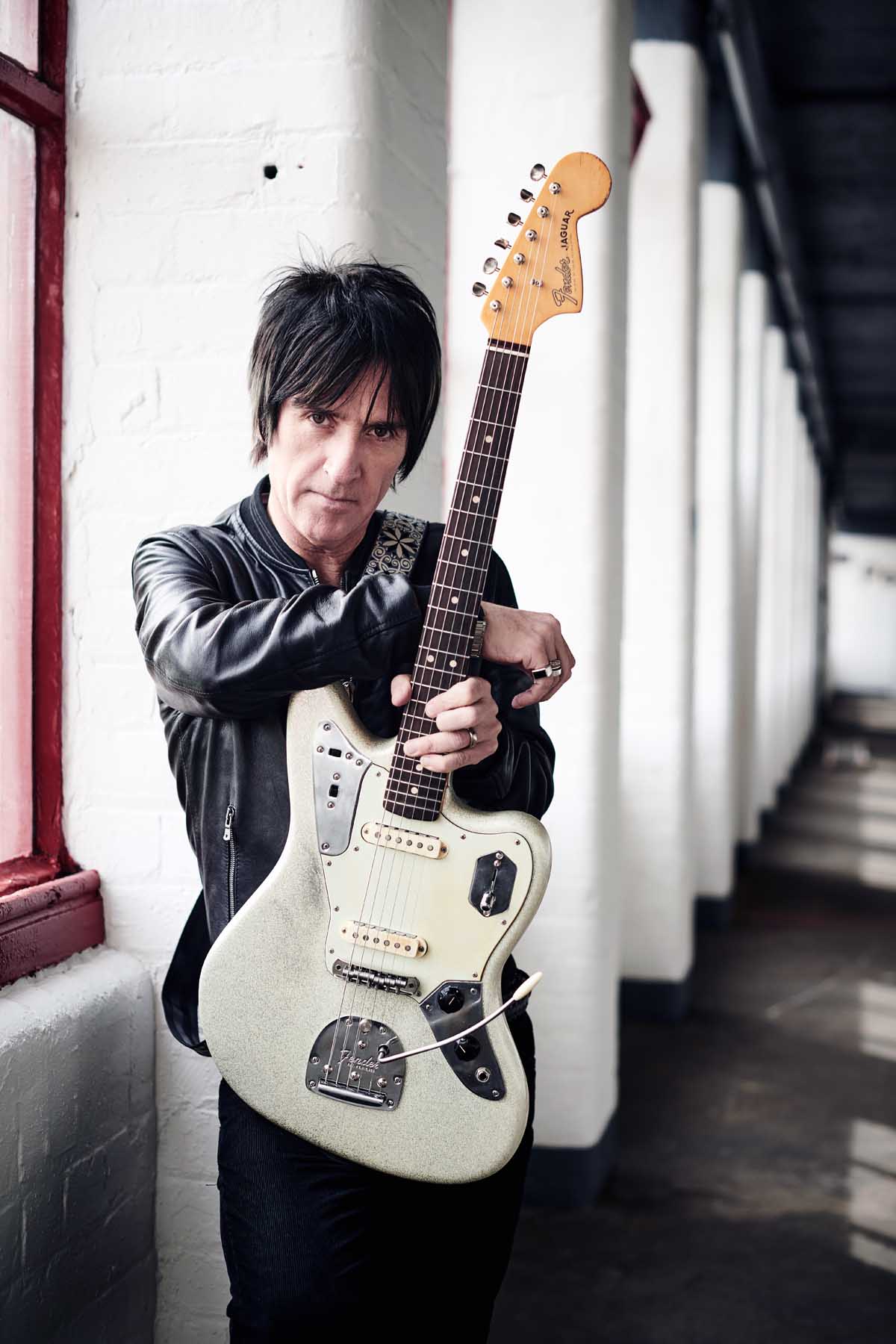
“The Jaguar is a really intuitive guitar to play,” Johnny told us in a recent interview. “And, therefore, it’s very musical. It’s a fantastic instrument. It was a really beautiful moment when I first connected with a Jag. I’d had one for years, but I’d overlooked it.
“I don’t think I was interested enough in it for some reason, because if I had been, I would have recognised how great it was in a second. It really was a jumping off point for me as a player. If I play on other people’s records in sessions and they want me to sound like me, I don’t need to bring any of those old Smiths guitars – I just plug in a Jag and it sounds like me.”
“It was great being involved with Johnny’s signature model [the Fender Johnny Marr Jaguar],” remembers Martin. “I got to name a Fender colour, Metallic KO – which I’m very proud of! Fender made Johnny a prototype that was the colour of a Candy Apple Red guitar he had that had faded out to a kind of orange colour.
“He said, ‘I don’t know what to call it,’ and I said, ‘In the 60s, they always had the word ‘metallic’ within the colour name – like Lake Placid Blue Metallic, Candy Apple Red Metallic and so on – so why not call it Metallic KO, after The Stooges album?”

With such endorsements and a range of new Jaguar models currently available across Fender’s American Professional, American Original, Player and Vintera series – not to mention the Kurt Cobain signature model – the Jaguar has never appeared more in demand.
The latest generation of guitarists seem to really like offsets. My 15-year-old son plays guitar and he really doesn’t want a Strat
Martin Kelly
“I think Jaguars are enjoying their heyday in many respects,” agrees Martin. “Since their point of launch, they’re at their most popular now. Up until recently, Jaguars and Jazzmasters didn’t really have the player association that made Strats and Teles so popular. But the younger guitar heroes do play them, so it’s putting them up on a different pedestal.
“The latest generation of guitarists seem to really like offsets. My 15-year-old son plays guitar and he really doesn’t want a Strat – he sees it as a whole other thing. I often wonder if the price of Strats and Teles will fall off the cliff.
“Are the younger kids who don’t have access to those vintage guitars, because they’re too expensive, ever going to care enough? Will the market then become flooded with baby boomer guitars? They were the most expensive of the original line, and it’s ironic they’ve become the least expensive to pick up on the vintage market.
“I think they represent good value. If you’re looking to get into 60s Fenders, and you’re on a bit of a budget, I think a Jaguar is a really good buy. You can buy a lot of vintage guitar for relatively little outlay. You can still see Sunburst ones and refinished guitars on sale for around £2,500 to £3,000.“
Rod Brakes is a music journalist with an expertise in guitars. Having spent many years at the coalface as a guitar dealer and tech, Rod's more recent work as a writer covering artists, industry pros and gear includes contributions for leading publications and websites such as Guitarist, Total Guitar, Guitar World, Guitar Player and MusicRadar in addition to specialist music books, blogs and social media. He is also a lifelong musician.

